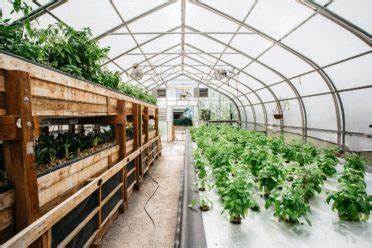
Vertical Farming: Revolutionizing Food Production for a Growing World
Introduction
Vertical farming has emerged as a groundbreaking solution to address the challenges posed by population growth. This innovative method of cultivating crops vertically, within controlled environments, holds tremendous potential for sustainable food production. By maximizing space and resources, vertical farming offers an exciting alternative to traditional agriculture. This article will delve into the concept of vertical farming, its historical background, key concepts, benefits, case studies, current trends, challenges, and future prospects.
Historical Background
While vertical farming may seem like a novel concept, its roots can be traced back to ancient times. One notable example is the Hanging Gardens of Babylon, one of the Seven Wonders of the Ancient World. However, it is in recent times that vertical farming has gained significant attention. In the early 20th century, visionary architects and scientists envisioned skyscrapers filled with farms, aiming to feed the rapidly urbanizing world. Over the years, advancements in technology and growing concerns about food security and environmental sustainability have fueled the development of vertical farming.
Key Concepts and Definitions
Vertical farming can be defined as the practice of growing crops vertically in stacked layers, using artificial lighting and controlled environments. It encompasses various core principles, such as vertical farming systems and structures, hydroponics, aeroponics, and aquaponics. Sustainability is a crucial aspect of vertical farming, as it ensures efficient resource utilization, reduced environmental impact, and the preservation of natural resources. Additionally, population growth, defined as the increase in the number of individuals residing in a particular region, has profound implications for food production.
Main Discussion Points
Vertical farming techniques and technologies form the cornerstone of this agricultural revolution. The diverse systems and structures used in vertical farming allow for maximum space utilization and crop yield. Hydroponics, aeroponics, and aquaponics are integral components of vertical farming, enabling the cultivation of crops without soil and with minimal water usage. These innovative techniques have the potential to revolutionize traditional farming practices, ensuring sustainable and efficient food production.

Benefits of vertical farming are numerous and significant. By utilizing resources efficiently, vertical farming reduces the environmental impact associated with traditional agriculture. The controlled environment allows for year-round crop production, ensuring a constant supply of fresh produce irrespective of seasonal limitations. This aspect, paired with increased food security, is vital for addressing the challenges posed by population growth.
Case Studies or Examples
Real-world examples of successful vertical farming projects demonstrate the practicality and feasibility of this agricultural method. Urban environments, with limited space and high demand for fresh produce, have witnessed the rise of vertical farms. These vertical farms integrate seamlessly into urban landscapes, providing a localized and sustainable source of food. Additionally, developing countries have embraced vertical farming initiatives to combat food scarcity and improve community livelihoods.
Current Trends or Developments
The field of vertical farming is constantly evolving, with advancements in technology driving its progress. Recent developments include sophisticated lighting systems, automated monitoring and control, and enhanced vertical farming structures. Additionally, research findings highlight the potential of vertical farming in addressing population growth and ensuring food security. These trends and developments contribute to the continued growth and expansion of vertical farming globally.
Challenges or Controversies
While vertical farming presents a promising solution, it is not without challenges. High initial investment costs deter many potential vertical farmers from embracing this method. Furthermore, energy consumption and sustainability concerns arise due to the need for artificial lighting and climate control in vertical farming systems. Addressing these challenges is crucial for the widespread adoption and success of vertical farming. Controversies and differing viewpoints surrounding vertical farming also need to be acknowledged and discussed constructively.

Future Outlook
The future implications of vertical farming for population growth are immense. As the global population continues to grow, traditional agricultural methods will struggle to meet the increasing demand for food. Vertical farming has the potential to revolutionize food production, offering a sustainable and efficient alternative. Advancements and innovations in the field are expected to further optimize vertical farming practices, making it a vital component of future food systems.
Conclusion
Vertical farming presents a groundbreaking solution to the challenges posed by population growth. Its key concepts, benefits, case studies, current trends, challenges, and future prospects highlight the immense potential of this innovative agricultural method. By embracing vertical farming, we can ensure sustainable food production, reduced environmental impact, and enhanced food security for a growing world.

References
Despommier, D. (2010). The vertical farm: feeding the world in the 21st century. St. Martin’s Press.
Liang, L., & Wei, P. (2021). A Review of Vertical Farming Technologies: Current Status and Future Prospects. Agronomy, 11(4), 712.
Food and Agriculture Organization of the United Nations. (2020). Urban and peri-urban agriculture. Retrieved from http://www.fao.org/urban-agriculture/en/
4Gómez, C., Roldán, E., Paredes, C., & Rattalino, G. (2018). A review on vertical farming: A useful technique to produce food in the 21st century. Spanish Journal of Agricultural Research, 16(3), e02-001.
Low, S. A., Adalja, A., Beaulieu, E., Key, N., Martinez, S., Melton, A., Perez, A., Ralston, K., Stewart, H., & Suttles, S. (2015). Trends in U.S. local and regional food systems: A report to Congress. Retrieved from https://www.ers.usda.gov/webdocs/publications/45103/49813_ap068_1_.pdf




